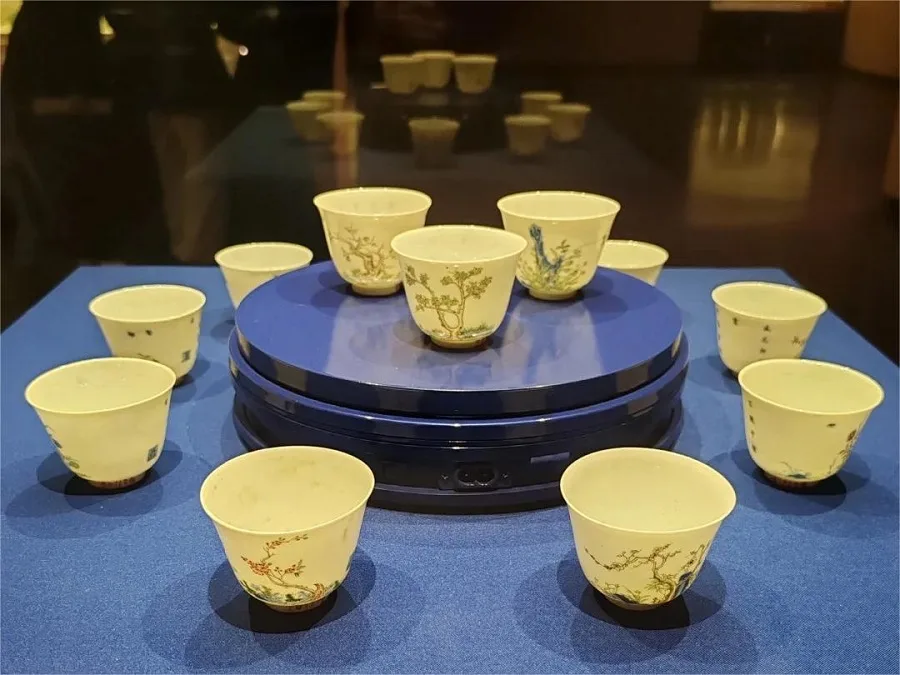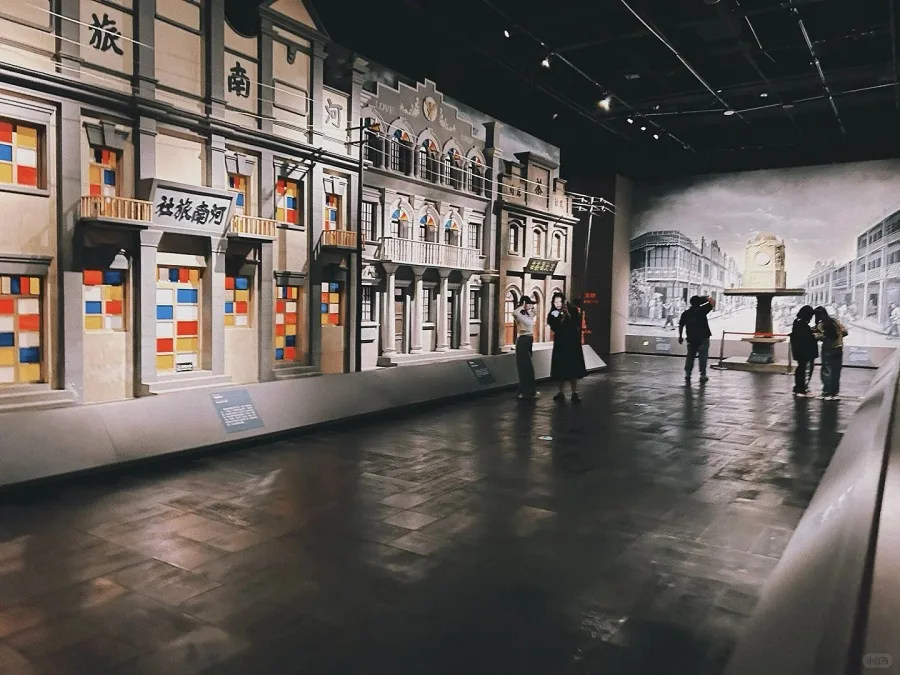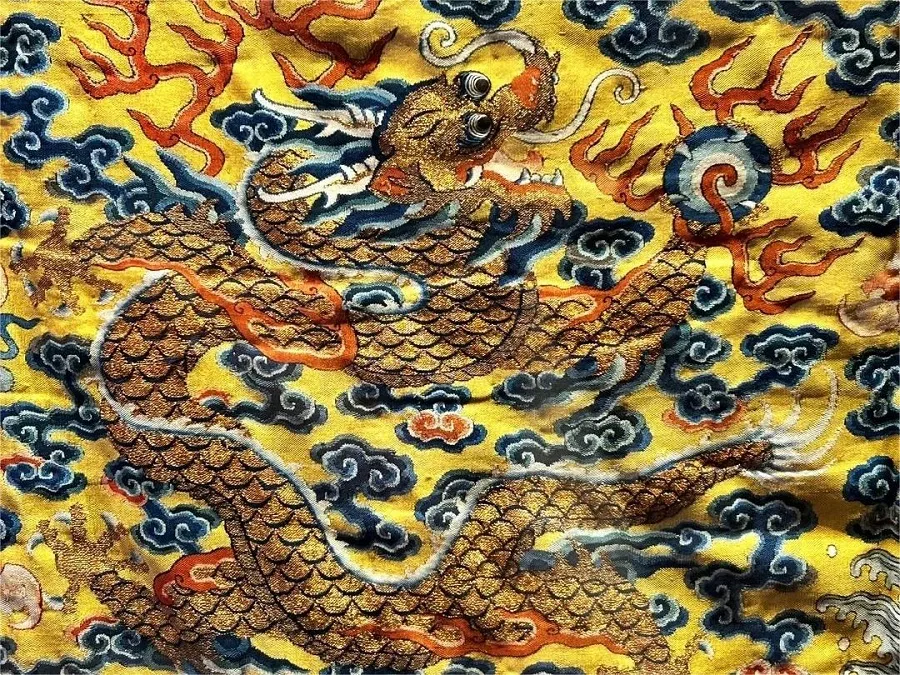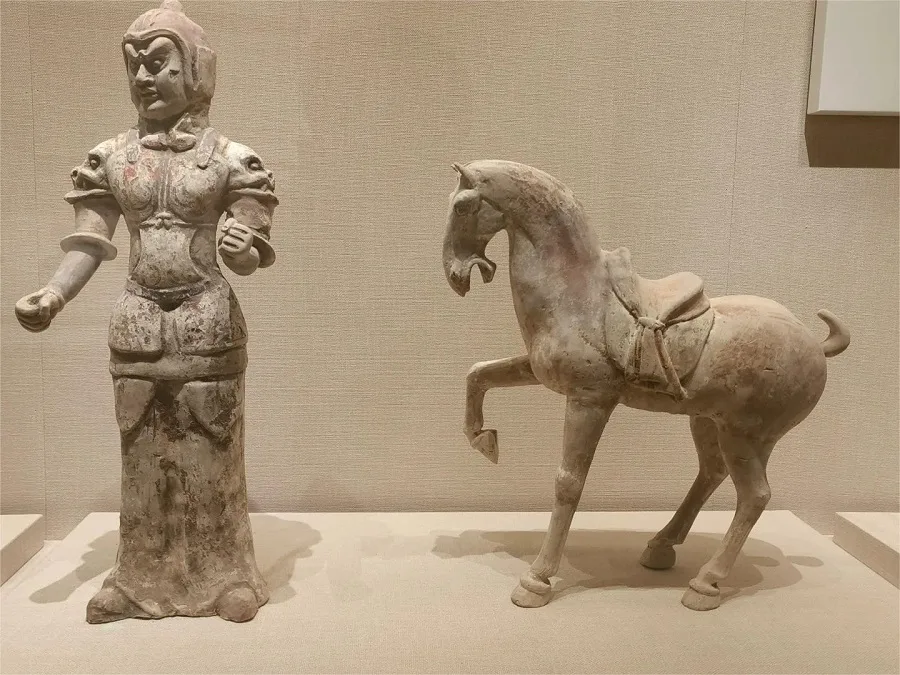Established on March 3, 1962, the Kaifeng Museum is a comprehensive local museum that integrates cultural relic collection, preservation, scientific research, exhibition, and education. In March 2018, the new site of the museum officially opened to the public in March 2018, with an exhibition area covering 11,855 square meters and a relic storage area of approximately 4,400 square meters. The architectural design emphasizes the triple-layered city pattern of the Northern Song Dynasty’s capital, with three main components: the outer perimeter, the circular inner courtyard, and the central main structure. Following the principle of “classical exterior, modern interior,” the design features lower buildings surrounding a centrally towering palace, reflecting the architectural characteristics of Song Dynasty building clusters.
The museum houses over 80,000 cultural relics, including 6,787 precious artifacts such as jade, pottery, bronze, porcelain, bone artifacts, stone tablets, and ancient books. With its rich collection spanning various historical periods, the Kaifeng Museum offers visitors a comprehensive insight into the cultural heritage of the region.
Table of Contents
- Basic Information
- Location and Transportation
- Exhibitions in Kaifeng Museum
- Ancient History and Culture of Kaifeng Exhibition
- Exhibition on Modern Social Life
- Fine Buddha Statues Exhibition from the Ming and Qing Dynasties
- Royal Items Exhibition from the Ming and Qing Dynasties
- Zhu Xian Town Woodblock New Year Print Exhibition
- Fine Stone Carving Exhibition
- Fine Arts Exhibition
- Science and Technology Exhibition of the Song Dynasty
- Vlog about Kaifeng Museum
Basic Information
| Estimated Length of Tour | 2 – 3 hours |
| Ticket Price | Free |
| Opening Hours | 9.00 – 17.00; Last admission: 16.00 |
| Telephone Number | 0086-0371-23299192 0086-0371-23269186 |
Location and Transportation
The Kaifeng Museum is situated at the intersection of Zhengkai Avenue and Sixth Avenue in the Longting District of Kaifeng City, Henan Province, China. To get there, you can take bus 57 or K101 and get off at Zhengkai Avenue Sixth Avenue Stop (郑开大道·六大街站).
Exhibitions in Kaifeng Museum
Ancient History and Culture of Kaifeng Exhibition

Kaifeng holds a significant place in Chinese history as one of the important regions where early civilization originated, boasting a history of over 5,000 years. It was the site of the ancient capital of the Xia Dynasty, located near the outskirts of Kaifeng. Additionally, seven dynasties, including the Wei, Later Liang, Later Jin, Later Han, Later Zhou, Northern Song, and Jin, established their capitals in Kaifeng throughout history. During the Northern Song Dynasty, Kaifeng emerged as the political, economic, and cultural center of China and one of the most prosperous trade metropolises globally. From being the fief of King Xiao of Liang in the Han Dynasty to the key town of Bianzhou during the Sui and Tang Dynasties, and the fief of Prince Zhou during the Ming Dynasty, Kaifeng has continuously held significant positions in Chinese history. The Ancient History and Culture of Kaifeng Exhibition is organized chronologically, spanning from the Neolithic period to the Yuan, Ming, and Qing Dynasties, aiming to accurately and comprehensively display the splendid and profound history of ancient Kaifeng civilization.
Exhibition on Modern Social Life

From the late Qing Dynasty to the establishment of the People’s Republic of China, Kaifeng served as the provincial capital of Henan Province. It was closely associated with significant historical events, including the Northern Expedition of the Taiping Army and the wars against the Nian Rebellion. During the period of the Republic of China, the Kaifeng Uprising of the Xinhai Revolution and the democratic politics led by the bourgeoisie under the Beiyang Government were intimately linked to Kaifeng. The modern industrialization of Henan began in Kaifeng, laying the foundation for the development of modern industry in the Central Plains. Moreover, Kaifeng’s strategic location in the Central Plains and its convenient transportation network have attracted numerous wealthy merchants throughout history, leading to the construction of over 70 guildhalls in the modern era. Kaifeng is also the birthplace of various forms of traditional Chinese opera, including Yuju (Henan Opera), Erjiaxian, Pear Blossom Drum, and Daoqing. The Exhibition on Modern Social Life provides a comprehensive understanding of the history and characteristics of modern Kaifeng for visitors.
Fine Buddha Statues Exhibition from the Ming and Qing Dynasties

Buddhism originated in ancient India in the 6th century BCE and was officially introduced to China during the late Western Han Dynasty. Over the course of more than two thousand years of history, Buddhism in China evolved into various sects with distinctive Chinese cultural characteristics. Buddha statues, with their rich and diverse forms in architecture, sculpture, and painting, have become integral to traditional Chinese culture. Chinese Buddhist art belongs to the realm of cultural and artistic creation, using materials such as gold, bronze, porcelain, wood, and stone to convey religious messages and inspire believers. Early Buddhist temples and stone carvings in China initially reflected the style of the Western Regions of India, with plump facial features and robust bodies portraying solemnity. It was not until the Eastern Jin Dynasty that Chinese-style Buddha statues began to emerge. Through the development during the Northern and Southern Dynasties, Sui, Tang, Five Dynasties, and both Song Dynasties, and into the Yuan, Ming, and Qing periods, Buddhist art gradually integrated into daily life, becoming part of decorative crafts and folk opera. Buddhist art not only embodies rich historical and cultural connotations but also reflects ancient Chinese social, political, economic, cultural, and aesthetic concepts.
Royal Items Exhibition from the Ming and Qing Dynasties

The Royal Items Exhibition from the Ming and Qing Dynasties showcases artifacts once held in the imperial palaces, including porcelain, jade, enamel, textiles, bamboo, wood, and ivory carvings, totaling over 240 pieces. Unlike traditional exhibitions categorized by material, this exhibition is organized according to the functions of the items, divided into four sections: dining, study, furnishings, and clothing accessories, aiming to elucidate the cultural significance of Ming and Qing court life. Through this exhibition, visitors can catch a glimpse of the royal splendor of the Ming and Qing Dynasties through the dormant treasures
Zhu Xian Town Woodblock New Year Print Exhibition

Zhu Xian Town Woodblock New Year Prints represent the origin of Chinese woodblock printing and are considered the “living fossil” of Chinese folk art. They have been listed as one of the “first batch of national intangible cultural heritage protection lists.” According to records in books, Zhu Xian Town Woodblock New Year Prints originated during the Northern Song Dynasty, about a thousand years ago. Flourishing during the Ming and Qing Dynasties in Zhu Xian Town, there were over three hundred workshops at the peak of its popularity. The woodblock prints from Zhu Xian Town are known for their meticulous use of colors, traditionally made from minerals and plants using refined traditional techniques. The prints are characterized by vibrant colors, balanced compositions, bold and concise lines, exaggerated and rustic forms, and a unique artistic style, reflecting the honest, warm-hearted, and passionate character and aesthetic taste of the people of the Central Plains. They often depict popular folk stories, mythological legends, characters from traditional operas, and admired heroes.
Fine Stone Carving Exhibition

The “Fine Stone Carving Exhibition” is a fundamental display at the Kaifeng Museum. Organized chronologically into five sections covering the Northern Wei, Sui, Tang, Song, and Ming-Qing periods, the exhibition primarily showcases stone carvings supplemented by explanatory text panels. The stone carvings and tomb epitaphs featured in this exhibition are integral parts of Kaifeng’s splendid culture, demonstrating the city’s rich cultural heritage. The Kaifeng Museum houses over 3,000 items of stone carvings, epitaphs, and sculptures from various dynasties, with tomb epitaphs being the most numerous. Ranging from the Northern Wei to the Ming-Qing periods, these stone carvings are highly regarded for their historical significance, artistic forms, and calligraphic techniques, attracting attention from scholars, artists, and calligraphy enthusiasts both domestically and internationally. Among them, many are considered treasures of Chinese stone carvings. This exhibition carefully selects 117 fine stone carvings for display, offering visitors a glimpse into the richness and diversity of Kaifeng’s cultural heritage.
Fine Arts Exhibition

As a renowned ancient capital and historical city with a rich cultural heritage, Kaifeng has cultivated a fertile soil for the development of calligraphy and painting. The Kaifeng Museum boasts a rich collection of over 1200 pieces of calligraphy and painting from famous artists spanning from the Song Dynasty to the present day. The collection encompasses landscapes, flowers and birds, figure paintings, and various calligraphy styles. Among the paintings, the earliest piece in the collection is “Landscape in the Studio” by Yan Hui from the Yuan Dynasty. This painting, once owned by the renowned Ming Dynasty collector Xiang Yuanbian, primarily features landscapes with occasional courtyard scenes and diverse human figures. In terms of calligraphy, the collection is even more extensive. This special exhibition selects over sixty classic calligraphy works, with Wang Xizhi’s “Seventeen Postures” from the Song Dynasty serving as the representative piece. Through this exhibition, visitors can not only appreciate the artistic achievements of calligraphy and painting but also gain a deeper understanding of the glorious history of calligraphy and painting development in Kaifeng, experiencing the cultural anecdotes and artistic charm within.
Science and Technology Exhibition of the Song Dynasty

The Song Dynasty was a period of significant advancement in ancient Chinese science and technology. Inventions such as gunpowder, the compass, and movable-type printing emerged and were widely used, exerting a profound influence on the progress of Chinese and global civilizations. Scientific and technological progress was evident in various fields including ceramics, metallurgy, architecture, water conservancy, shipbuilding, and medicine. Astronomy observation and the manufacturing of astronomical instruments also reached historical peaks during this period. The Song Dynasty was characterized by the blossoming of technological innovations and the gathering of elites, marking a brilliant page in the history of Chinese science and technology. This exhibition focuses on the three major inventions of the Song Dynasty and introduces the splendid achievements in astronomy, military affairs, navigation, printing, medicine, and metallurgy, showcasing the magnificent technological achievements of the Song Dynasty.

